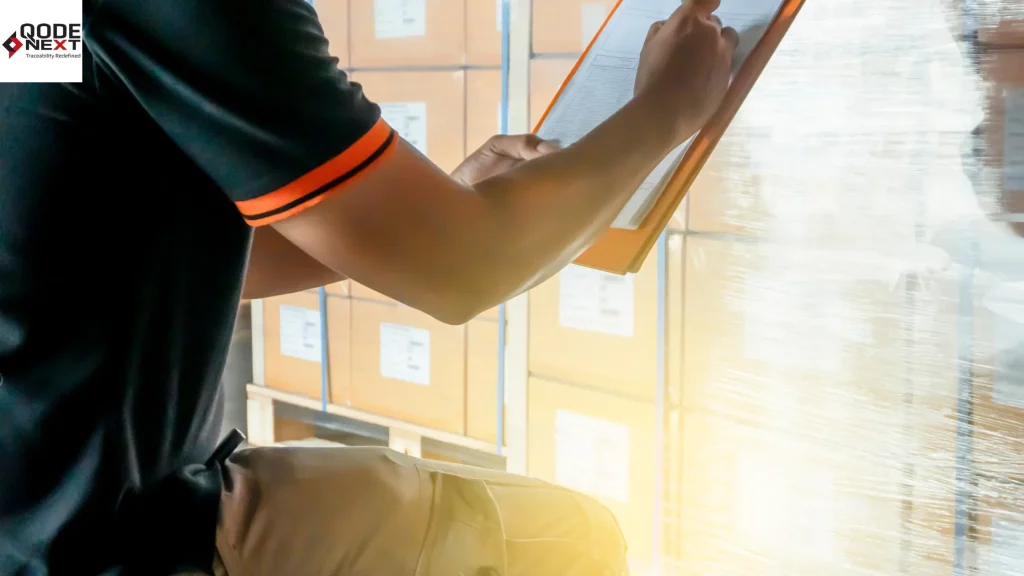The RFID (Radio Frequency Identification) market is estimated to grow from $14.5 billion in 2022 to $35.6 billion by 2030 at a CAGR of 11.9%.
The technology leverages radio waves to detect objects or people. RFID tags are electronic devices that transmit data to and from RFID readers and can be added to products for data collection. Surely, warehouse managers must commit to this technology to reap its immense benefits.
According to Bill Hardgrave, the dean of Harbert College of Business, Auburn University, and founder of the RFID Lab, RFID increases the accuracy of inventory from “65% to over 95%.” He adds that “high inventory accuracy [leads] to more sales” when retailers use this data to enhance their processes and operations.

What Is RFID for Retail?
With different factors driving technology forward for manufacturers and retailers, data optimization is the need of the hour. RFID creates new data sets about the in-store environments, movement of products, and consumer behaviour.
After an incubation of 20 years, with advances in range, cost, and readability, RFID is poised to deliver precise use cases standing right at the heart of a more data-driven, accurate, customer-driven, and omnichannel shopping experience.
All in all, retailers utilizing this technology can build additional capabilities on the back of substantial cost savings and opportunities for revenue generation.
RFID Use Cases
RFID in retail unlocks value across an array of use cases. Here’s a profound elaboration of the same:
Driving Top-Notch Inventory Tracking
The archetypal inventory process is manual, which takes time. Favourably, RFID has the potential to improve overall in-store inventory accuracy. In fact, inventory tracking is the most prevalent RFID retail application. That’s because RFID-powered tracking helps deliver accurate information related to product location, which lowers the cost and complexities of speed picking, inventory management, packing, and delivery. This, in turn, enhances customer experience.
It’s noteworthy that RFID tags need not be in the line of sight of the RFID reader, say an RFID wand or an antenna. That’s because the technology uses radio waves. As a result, every product being received can be swiftly and accurately tracked.
The process can be further streamlined by combining equipment. For instance, handheld wands can track products in the inventory with another system like metal detectors, with the latter beeping faster when the wand comes closer to the item. Also, since RFID antennas do not depend on the line of sight, cycle counting becomes significantly faster and more accurate than the conventional process.
Enhancing In-Store Operations and Experience
Consider this; a single style of clothing could have an array of sizes, colours, and variations. But not all of these product attributes may be equally prevalent in a store at a given time, and rightly so. After all, it’ll become almost impossible to have every possible style on display. But then, how to successfully manage the availability of products? That’s where RFID comes into the picture.
RFID can address this problem pretty effectively by tracking items on a shelf and maintaining accurate inventory information. It can inform employees when a certain combination is not out for display or is low in inventory, where it is in the warehouse, etc. That’s how operations can be streamlined, and the inventory can be kept at a reasonable level.
About experience – the above case also stresses the benefits of RFID in reducing a great deal of clutter, thereby carving out a better environment for both employees and customers. But on the customer end, the applications can also be extended to seamless checkout systems where they don’t have to wait in the queue; they can pay digitally, and the RFID tag can be automatically disabled.
Ensuring Robust In-Store Security
Again, the fact that RFID tags need not be in the line of sight of the readers to be read makes them viable for creating a fool-proof RFID-powered security system for retail properties. For example, whenever someone tries to steal items from a store, the presence of RFID tags and readers can be used to automatically alert the authorities. Authorities can instantly access information about what items have been stolen, from where, and through which doors.
Taking Customer Experience Up a Notch
With RFID, retailers can introduce Magic Mirror fitting rooms with touchscreen monitors instead of mirrors. These smart fitting rooms are geo-location-enabled, showing available colours to try on and see what looks best on the buyer. They also show complementary clothes in the store and provide relevant information like fabric quality, size, colour, fit, etc. This enhances customer experience and encourages buyers to look for the best option, engage with it, and purchase.
In addition, items may be tried but not purchased, which becomes a major element of internal analysis. The related data can also be used for remarketing purposes.
RFID Ecosystem Requires Synergy
Retail operations rely on several players moving items from one point to another until they reach their destination – the end users. That’s where unique challenges lie – organizations cannot afford bottlenecks while moving items between departments and locations.
It is essential to nurture collaboration between the leaders – retailers, manufacturers, and integrators, among others. And it’s here that stakeholders’ commitment to adopting the latest RFID technology to improve standards, processes, and economies plays a crucial role.
To advance, retailers must initiate cross-functional changes from product designing to merchandising and beyond. Adopting an end-to-end holistic approach can extract maximum value. Finally, bringing all the cross-functional leaders into the same frame can improve decision-making. Keeping RFID as the focal point of the changes will ensure investments are made in the right direction.






